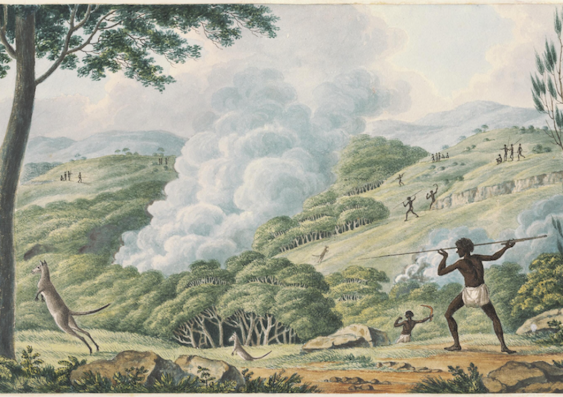To mark NAIDOC Week 2024, we look at how ╣·▓·¥½ãÀ is ensuring Indigenous knowledge of fire remains a key component of our bushfire research.┬á
Many people in modern society are fearful of fire. Bright orange flames and billowing black smoke are almost solely associated with death and destruction.
It is not surprising after the devastation caused by the 2019-20 Black Summer Bushfires, among others. But this was not always the case.
To Indigenous Australians fire was a tool for hunting and harvesting food and a key part of cultural rites. To understand and use fire was intrinsic to living on Country. Indeed, this deep connection between Indigenous people, fire and Country endures today.
╣·▓·¥½ãÀ Canberra researchers are working to better incorporate Indigenous practices and understandings of fire in bushfire management, to better prepare for an increasingly uncertain future thanks to climate change.
Media enquiries
For enquiries about this story or to request an interview, please contact Elliot Williams.
░ı▒▒¶:╠²+61 2 5114 5149
Email: elliot.williams@unsw.edu.au
The theme of for 2024 is ÔÇÿKeep the Fire Burning! Blak, Loud and ProudÔÇÖ. The National NAIDOC Committee said: ÔÇ£Fire represents the enduring strength and vitality of Indigenous cultures, passed down through generations despite the challenges faced.
ÔÇ£As we honour this flame, we kindle the sparks of pride and unity, igniting a renewed commitment to acknowledging, preserving, and sharing the cultural heritage that enriches our nation.ÔÇØ
╣·▓·¥½ãÀ Bushfire Director Professor Jason Sharples, a Bundjalung man, said understanding Indigenous fire knowledge added depth to modern bushfire research while paying respect to the cultural practices common across Australia prior to colonisation.
ÔÇ£Fire management was an intrinsic part of living on Country for Indigenous people and involved the whole community,ÔÇØ Prof. Sharples said.
ÔÇ£Many of our fire practices today, such as prescribed burns, are informed by Indigenous knowledge, even if people may not realise it.
ÔÇ£Local Indigenous people would know the land was ready for a burn when certain environmental indicators aligned, for example, when wattle flowers fell and when certain cloud formations were observed over prominent mountains. Essentially, Country told them the right time to burn, and the people would offer fire as a gift back to Country.
ÔÇ£From a Western scientific perspective, this aligns with selecting the correct season based on the native flora, and only burning on a day when temperature and relative humidity conditions are within an acceptable range, as indicated by the cloud formations.
There are endless lessons to be learned from the relationship Indigenous Australians have with fire and at ╣·▓·¥½ãÀ weÔÇÖre making a concerted effort to ensure those lessons are central in our research.
╣·▓·¥½ãÀ Canberra is leading two significant projects, supported by the, in which incorporating Indigenous knowledge and collaborating with Indigenous partners is a key requirement.
One of the projects will look at ridgelines and how to best manage the landscape around them to prevent bushfires from developing into dangerous conflagrations.
ÔÇ£Ridgelines are significant within the landscape both ecologically and because they correspond closely with Indigenous Songlines,ÔÇØ Prof. Sharples explained.
ÔÇ£Ridgelines are particularly susceptible to dry lightning strikes and so they often serve as the ignition point of bushfires. Moreover, the winds that swirl around ridgelines can create extreme bushfires and also send embers flying great distances.
ÔÇ£Indigenous Songlines are routes that cross Country linking significant sites, and they often followed ridgelines. In this project we will work with Indigenous partners to combine traditional knowledge of ridgelines with mathematical modelling to improve management of these significant areas.ÔÇØ
The second project is examining the bushfire regimes of south-east Australia and attempting to better understand how they will be affected by climate change. With updated models and mapping, it is hoped the research will identify the areas most at risk of extreme bushfire events, like fire thunderstorms.
To do this, the researchers will examine traditional fire regimes, Indigenous calendars and cultural fire lore from across Country to gain a deeper understanding of how modern fire regimes have changed over time.
ÔÇ£NAIDOC Week is a good opportunity to remind ourselves of the importance of promoting the cultural practices and learnings of Indigenous Australians and this will remain central to the work we do within ╣·▓·¥½ãÀ Bushfire,ÔÇØ Prof. Sharples said.
Visit the ╣·▓·¥½ãÀ Bushfire website for more information about the research being conducted at ╣·▓·¥½ãÀ.







